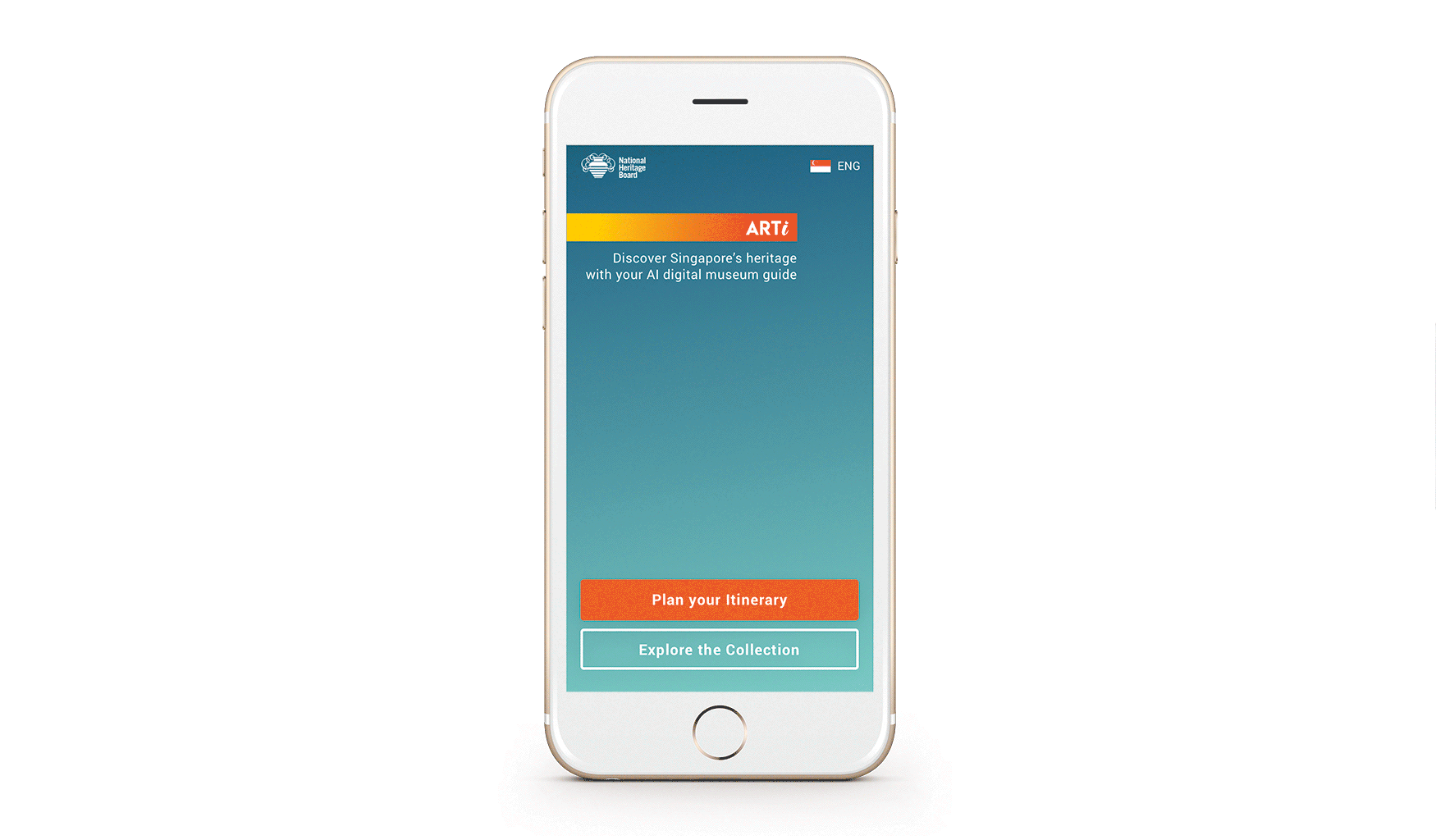NHB (National Heritage Board)
The Case Study

THE CHALLENGE
NHB is looking to leverage technology to develop smarter and more dynamic ways to deliver content that is able to contribute to more impactful visitor engagement across all touchpoints.



Currently,
there is limited means by which visitors would have access to and be able to engage with such content.
THE BRIEF (by the client):
The solution should be able to provide quick access to content portals and interfaces that encourage visitor engagement through self-directed discovery, and build on dynamic conversations and social exchanges.
It also should be able to handle multiple language options, function both in an indoor as well as outdoor environment, with minimal infrastructural investment and deployment required.
PROTOTYPE OVERALL GOAL
To come up with a prototype solution that can provide easy and quick access to the content portal, leveraging heavily on existing apps and technologies, that is able to engage visitors with personalised content based on indicated preferences
“How might we engage the public to discover and learn about Singapore's heritage and the National Collection in a personalised, seamless and dynamic experience?”
THE APPROACH
Firstly to kick start the project, I proposed to the team that we went to a museum to get in the mind of a visitor. We did some on-site observations, followed by some desk research. As we were on a time crunch, we spoke to a few colleagues as well. (everyone must have gone to A museum at some time!) I also did a quick analysis of other museums and what kind of tech or apps they had. With these information on had, I did up proto-personas for the team to have a feel of what kind of audience we would be looking at. Our brainstorming session was a successful one with the Chief Technical Officer, in which we then knew we could empower our solution with IBM Watson
WHAT I DID
ON-SITE DISCOVERY

Focusing our efforts on The Asian Civilisation Museum for rich its collection of Asian antiquities and decorative art, together with 2 UI Designers, we headed down to the Asian Civilisation Museum to understand the space and the experience within the museum itself. We observed the types of visitors to the museum and what they were doing (Did they take photos? Were anyone reading the description cards?). There wasn’t a great number of visitorship that day, so we also drew from past experiences that we had from our own visits to other museums.
From there, I looked at the competition out there (local and regional) with a tech component. A number of them utilised Google Street View Tour, or the app had an AR component as a museum companion which scans the art pieces to enhance the viewing experience while onsite.
After this initial research and talking to fellow colleagues for their own museum experiences, I then put together a proto-persona for the team to have an understanding of the type of person we would be designing the solution for.




BRAINSTORMING
We were lucky to be working very closely with the Chief Technology Officer, as we could draw on his past experiences from his previous projects. After a session of brainstorming together, he shared with us a project which developed an IBM Watson Discovery powered solution.
This was the perfect way to combine technology with art.
What is IBM Watson?
IBM Watson Discovery is an award-winning enterprise search and AI search technology that breaks open data silos and retrieves specific answers to your questions while analyzing trends and relationships buried in enterprise data. Watson Discovery applies the latest breakthroughs in machine learning, including natural language processing capabilities, and is easily trained on the language of your domain. Unlike competitors, Watson Discovery can be deployed on any cloud or on-premises environment.


Leveraging on IBM Watson’s AI to analyse and make sense of millions of data points together through natural language processing (NLP) and data prioritisation to deliver text-based and audio content to visitors.
And with that we came up with a solution. One that:


THE SMART HERITAGE COMPANION
Almost immediately after the brainstorming session, we got about to thinking of suitable names for the solution. Keeping in mind of a personalised experience users, our ambition is to provide the public with a platform that enables discovery of the National Collection, around narrative threads that appeal to their particular interests. And the combination of the two which is 'Art & I' = Arti.

USER JOURNEY
I got down in coming up with the user journey, and this gave a clearer picture to the team. I briefed them on the key screens to be mocked up, and what features to be included as well.

THE NEXT STEP
I identified the key screens to be done while the UI team then developed a new UI.

